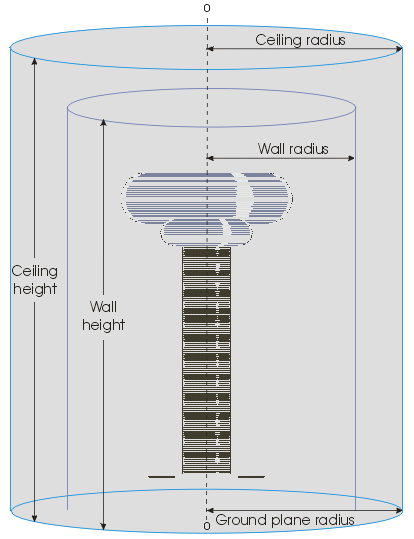The coils resonant frequency is affected by external capacitance. This includes not only topload objects, but also the coils surroundings.
IT IS IMPORTANT TO ENTER A GROUND PLANE RADIUS TO ENSURE RESONANT FREQUENCY ACCURACY.
Every coil on earth has a ground plane (the earth). Unless your testing a coil out in deep space, insert a ground plane radius value.
The following image shows how the program identifies with the walls, ceiling, and groundplane. As far as computations are concerned, the program uses cylinders to represent the walls and discs to represent the ceiling and ground plane.
All height values are referenced from the groundplane. The ceiling and wall heights are typically the same value, so version 11 and forward will use only a Wall Radius and Ceiling Height inputs.
If you enter a Wall Radius, you must also enter a Ceiling Height (and vise-versa). If either inputs are left at 0, the program will ignore both inputs.
All radius values are referenced from the center of the coil. The program assumes the coil is in the center of the room, but often, this is not the case. When the coil not centered, enter the average radius value.
Wall and Ceiling values can be difficult as walls and ceilings are often of different shapes and materials. The best way to use this value is to measure the resonant frequency of a coil and then set these values to match. From that point on, you will "know" your values for other coils you build.
